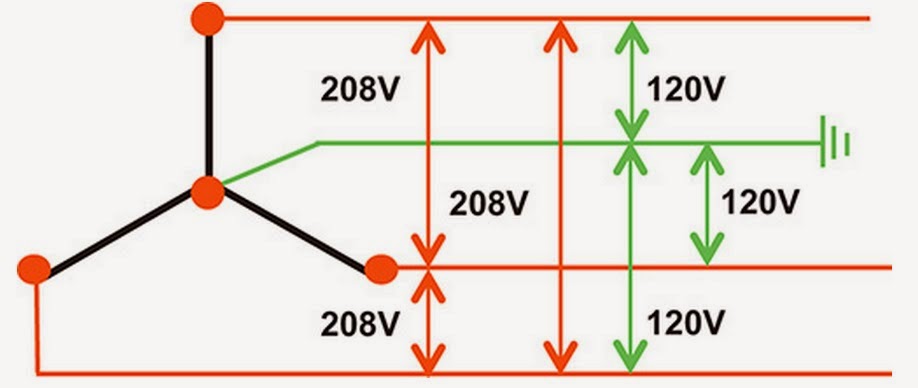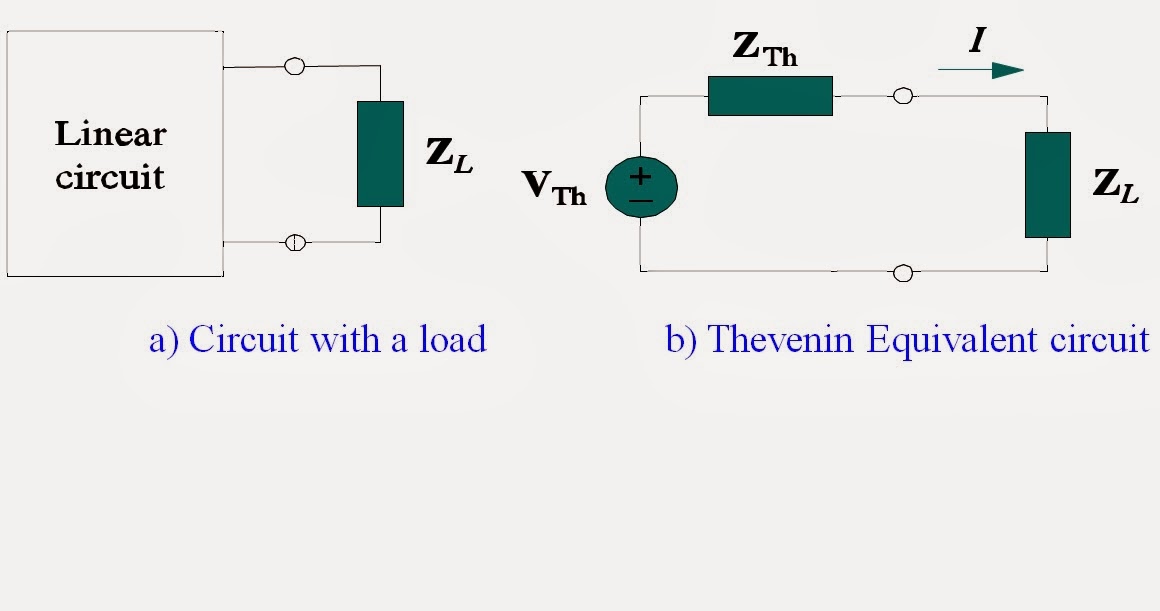Balance Three-Phase Voltage
A balance 3-phase voltage can only be obtain if we have a 3-phase ac generator by converting potential energy to mechanical energy and to electrical energy in the hydro-power plant for example. A three-phase voltage may be arranged in delta (∆) or wye (Y) system. A wye system allows to provide two different voltages for example 173-300 volts, 173v is the line to neutral voltage and the 300v is the line-to-line voltage. In delta system can only provide one voltage magnitude however it has a greater redundancy as it may continue to operate normally with one of the three supply windings offline.
This is the graph of the balance three-phase voltage source connected into the loads by three to four wires and each voltage source has 120 degrees apart.
3-phase delta system
3-phase wye system
Conversion of delta to wye and wye to delta source
Vp = VL / sqr.(3)∠-30
VL = Vp sqr.(3)∠30
Conversion of delta to wye and wye to delta loads
VL = Vp sqr.(3)∠30
Conversion of delta to wye and wye to delta loads
ZY=ZD / 3
ZD= ZY (3)
Balance Y-Y connection example problem
find the total current flowing in a single phase circuit (Ia)
Vy = 110∠0 V
since it is a balance single phase first we draw the single phase equivalent circuit
we know that
Ia=Van / Zy
to obtain (Ia) we calculate the total impedance of the single phase circuit
Ia=110∠0 / (5-j2)+(10+j8)
Ia=6.81∠-21.8 A
the total current flowing in the 3-phase system is
6.81A x 3 = 20.23 A
finding the delta equivalent of the source is
VD =Vp sqr.(3)∠30
VD = 110 sqr.(3) ∠(0+30)
VD =190.52∠30
delta equivalent of the load in the circuit
ZD= ZY (3)
ZD=10+j8 x (3)
ZD=30+j24 ohm
note: when the source is connected in delta it is much easier if we convert it in Y- connection to solve the problem.
Vy = 110∠0 V
since it is a balance single phase first we draw the single phase equivalent circuit
we know that
Ia=Van / Zy
to obtain (Ia) we calculate the total impedance of the single phase circuit
Ia=110∠0 / (5-j2)+(10+j8)
Ia=6.81∠-21.8 A
the total current flowing in the 3-phase system is
6.81A x 3 = 20.23 A
finding the delta equivalent of the source is
VD =Vp sqr.(3)∠30
VD = 110 sqr.(3) ∠(0+30)
VD =190.52∠30
delta equivalent of the load in the circuit
ZD= ZY (3)
ZD=10+j8 x (3)
ZD=30+j24 ohm
note: when the source is connected in delta it is much easier if we convert it in Y- connection to solve the problem.


















